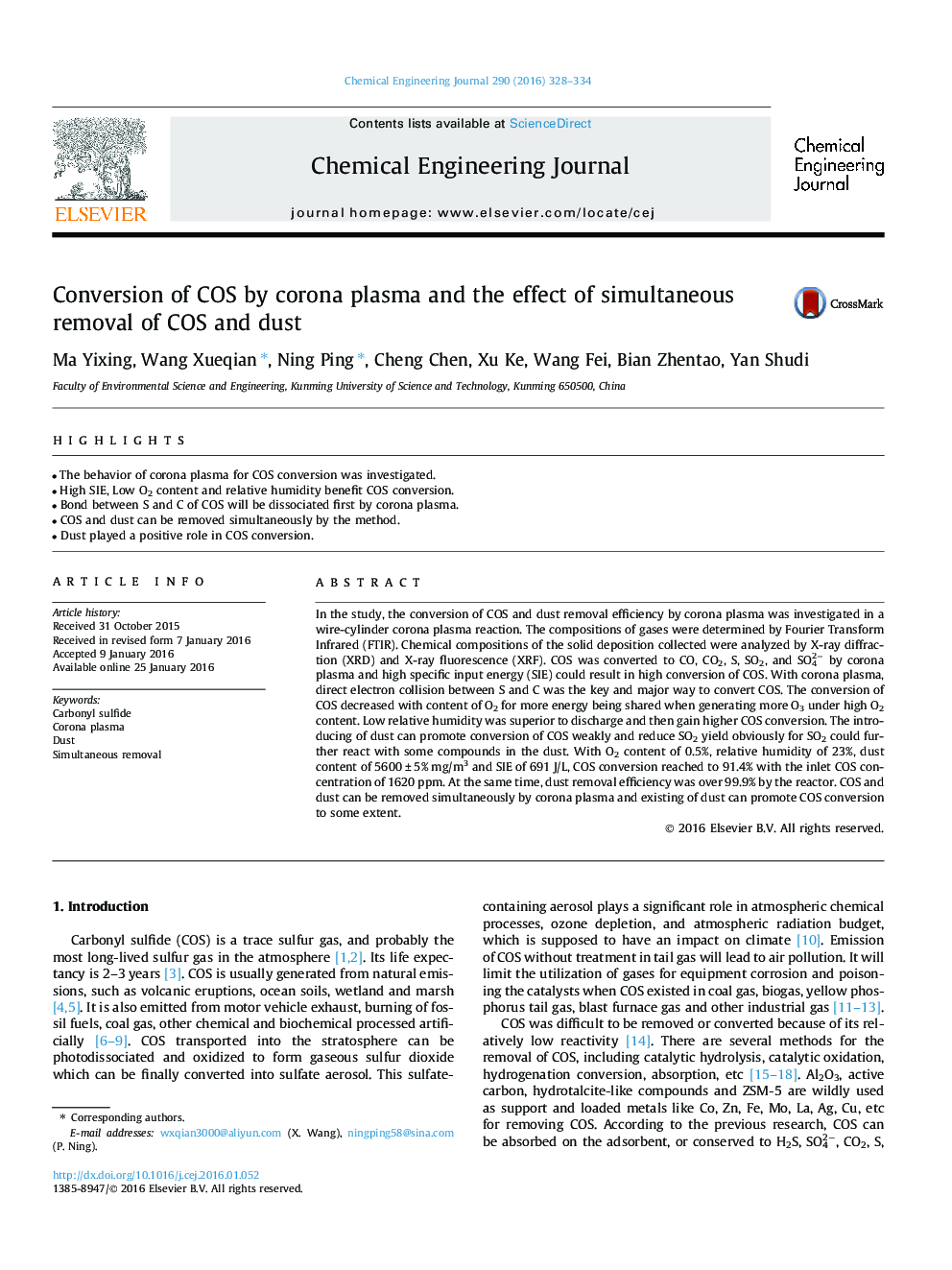| Article ID | Journal | Published Year | Pages | File Type |
|---|---|---|---|---|
| 145768 | Chemical Engineering Journal | 2016 | 7 Pages |
•The behavior of corona plasma for COS conversion was investigated.•High SIE, Low O2 content and relative humidity benefit COS conversion.•Bond between S and C of COS will be dissociated first by corona plasma.•COS and dust can be removed simultaneously by the method.•Dust played a positive role in COS conversion.
In the study, the conversion of COS and dust removal efficiency by corona plasma was investigated in a wire-cylinder corona plasma reaction. The compositions of gases were determined by Fourier Transform Infrared (FTIR). Chemical compositions of the solid deposition collected were analyzed by X-ray diffraction (XRD) and X-ray fluorescence (XRF). COS was converted to CO, CO2, S, SO2, and SO42− by corona plasma and high specific input energy (SIE) could result in high conversion of COS. With corona plasma, direct electron collision between S and C was the key and major way to convert COS. The conversion of COS decreased with content of O2 for more energy being shared when generating more O3 under high O2 content. Low relative humidity was superior to discharge and then gain higher COS conversion. The introducing of dust can promote conversion of COS weakly and reduce SO2 yield obviously for SO2 could further react with some compounds in the dust. With O2 content of 0.5%, relative humidity of 23%, dust content of 5600 ± 5% mg/m3 and SIE of 691 J/L, COS conversion reached to 91.4% with the inlet COS concentration of 1620 ppm. At the same time, dust removal efficiency was over 99.9% by the reactor. COS and dust can be removed simultaneously by corona plasma and existing of dust can promote COS conversion to some extent.
